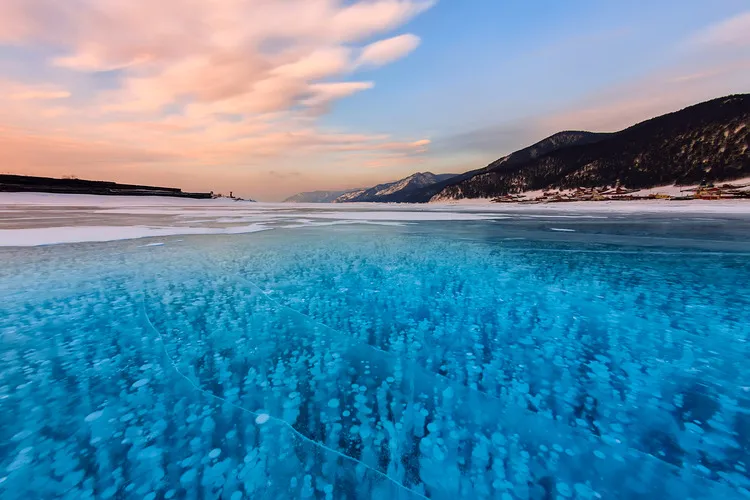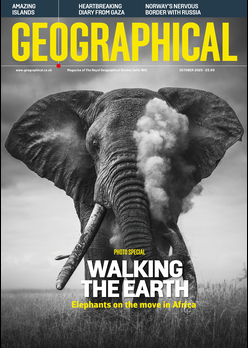
The fascinating methane bubbles underneath frozen lakes across the world hide a darker secret that can harm our planet
By
Beneath the surface of Canada’s Abraham Lake, a mesmerising spectacle unfolds during the winter months: frozen methane bubbles. These gas bubbles, trapped within the ice, create a breathtaking winter wonderland that has captivated photographers and tourists alike. However, their beauty belies a darker truth: they are a ticking time bomb for our planet.
Their formation begins in the depths of the lake. As organic matter, such as decaying plants and animals, accumulates at the bottom, anaerobic bacteria break it down through a process known as methanogenesis. This process releases methane, a potent greenhouse gas, which rises in bubbles through the water column. During the frigid Canadian winters, when the lake’s surface freezes over, these methane bubbles become trapped within the forming ice.

Methane, the primary component of natural gas, is a far more potent greenhouse gas than carbon dioxide. Molecule for molecule, methane is estimated to be 25 times more effective at trapping heat in the Earth’s atmosphere over a 100-year period. While methane has a shorter atmospheric lifetime compared to carbon dioxide, its immediate warming potential is significantly higher.
Take our quiz and win a prize if you score more than 75 per cent…
The implications of these frozen methane bubbles for our climate are profound. The Arctic and sub-Arctic regions are experiencing accelerated warming, leading to earlier ice melt and longer periods of open water. This creates ideal conditions for methane release from both freshwater and marine environments. When the ice covering these methane-laden lakes melts, the trapped gas is released into the atmosphere, contributing to climate change in a feedback loop.
The phenomenon of frozen methane bubbles is not confined to Canada. Similar occurrences have been documented in lakes across the Arctic and sub-Arctic regions, including Siberia, Alaska, and Scandinavia. These vast reservoirs of methane, locked away in frozen environments, represent a significant and growing climate threat.
Scientists are racing to understand the extent of methane emissions from these frozen lakes and their potential impact on global warming. Studies have shown that methane release from thawing permafrost, which underlies many of these lakes, is increasing at an alarming rate. As the Arctic continues to warm, the release of methane from these frozen reservoirs is expected to intensify, exacerbating climate change impacts.




